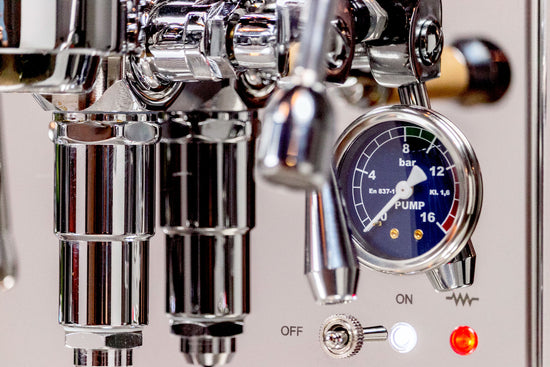The Pump: The Heart of Your Espresso Machine

To give water the strength to push through a tightly packed bed of finely ground coffee, machines need pressure: 9 bars of pressure to be exact, which roughly translates to 130 psi. Some of the first espresso machines used pistons attached to large levers. Baristas would have to manually pull these levers to force the water to pass through the coffee (hence the term pull an espresso). Most modern espresso machines have ditched manual labor for electric pumps. In home espresso, there are two categories of electric pump: the vibratory pump and the rotary vane pump. A vibratory pump, or vibe pump, is a small electromagnetic workhorse. A piston attached to a magnet is set inside a metal coil. Electrical current runs through the coil causing the magnet to rapidly move the piston back and forth, pushing water through the machine. Your average vibe pump clocks in at sixty pushes per second.

Unlike a vibratory pump, a rotary pump is mechanical. It is also a complex mechanism. A motor spins a disc that is offset inside a large, round chamber. The spinning disc is segmented into sections by vanes. As the disc spins, the vanes press against the wall of the outer chamber, diminishing the size of the section, creating pressure. Water enters in during the large phase and is pushed out as the section shrinks.

There are relative advantages to either pump. Vibratory pumps are smaller, inexpensive, and tend to be easier to replace. Rotary pumps are quieter, offer more consistent pressure, and generally have longer lifespans. It’s important to note both pumps produce excellent espresso.
-
Vibratory Pump
- Pros: Inexpensive, easy to replace, small
- Cons: A little louder; shorter lifespan (~5-6 years)
- Recommended Machines: LUCCA A53, Profitec Pro 300
-
Rotary Pump
- Pros: Long lifespan; quieter operation
- Cons: Larger device
- Recommended Machine: LUCCA M58
To learn more about the inner workings of your machine, check out How Do Espresso Machines Work on our blog.